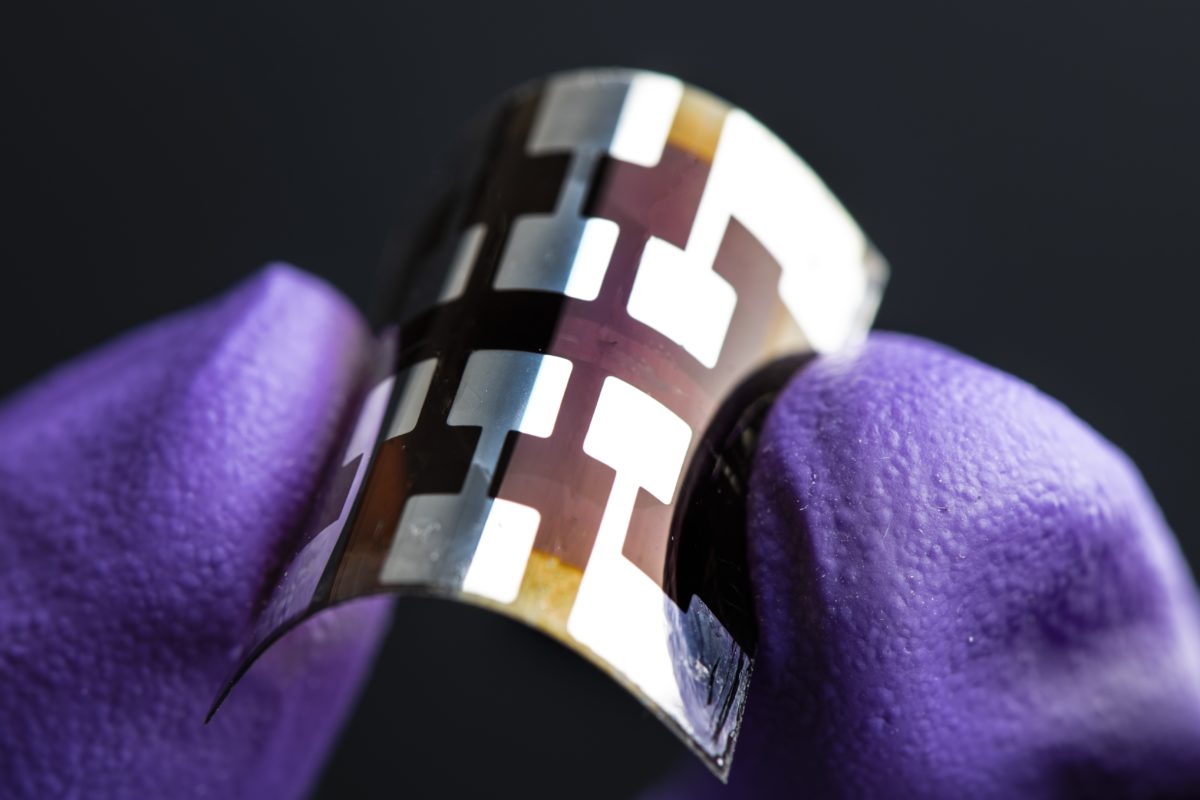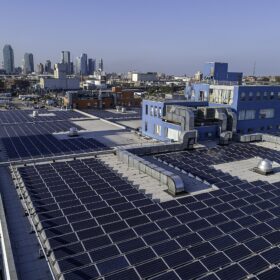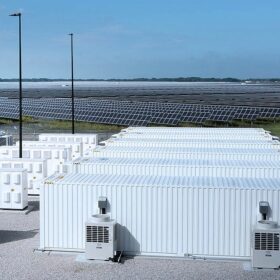U.S. startup Sofab Inks has launched tin oxide and nickel oxide products for use as perovskite solar cell transport layers to enable greater stability, efficiency, and scalability compared to incumbent materials.
The spinoff of University of Louisville offers its flagship tin oxide and nickel oxide materials as perovskite solar electron transport layers (ETL) and hole transport layers (HTL) respectively.
The material was recently demonstrated in a champion 20.4%-efficient perovskite solar cell made on a flexible substrate. “Our customers have reported even higher efficiencies of 24% to 25%,” Jack Manzella, COO Sofab Inks, told pv magazine.
The research resulting in a flexible substrate 20.4%-efficient triple cation (TC) perovskite solar cell (PSC) was reported in “Expanding the solvent diversity and perovskite compatibility of SnO2 inks that are directly deposited on perovskite layers,” published by iScience.
In the same study, several other perovskite cells were made with methylammonium lead triiodide (MAPbI3), mixed cation (MC), and MA-free perovskites as the photoactive layers. The champion efficiencies reached 16.9%, 18.68%, and 17.71%, respectively.
“The unencapsulated TC devices retained 90% of their initial average efficiency after 600 h under continuous light illumination in an atmosphere-controlled box at 10% humidity and a temperature of 35 ± 5 C,” according to the paper.
“The results were particularly noteworthy because they were fabricated using blade coating on polyethylene terephthalate-indium tin oxide (PET-ITO) substrates,” Blake Martin, CEO of Sofab Inks, told pv magazine.
In the meantime, the material has been successfully applied in several pilot-scale perovskite module manufacturing runs at customer facilities, demonstrating a viable replacement for C60/fullerene-based ETL, according to Manzella.
The company is now integrating the material into customer production lines, primarily located abroad, and scaling manufacturing to meet demand. Concurrently, to support rapid device development, Sofab Inks has built up its own perovskite module R&D capacity. This reportedly enables it to “iterate quickly, optimize performance, and co-develop next-generation materials” with customers.
Indeed, it was mentioned as a co-development partner of Australian perovskite module manufacturing startup Halocell in a report by pv magazine Australia.
“Our products were developed using scalable, industry-aligned techniques and do not require custom equipment or conditions,” Peter Armstrong, Sofab head of manufacturing, told pv magazine. He acknowledged that there are some proprietary processes, but they have been designed to be “compatible with existing manufacturing infrastructure.”
The venture is planning to raise a seed round to grow the team and expand manufacturing capacity. “We are particularly interested in working with strategic partners,” said Manzella.
Founded in 2022, Sofab Inks has raised about $1.2 million in pre-seed funding. “We’re backed by leading deep-tech investors, including Snocap Ventures, Keyhorse Capital, Bluegrass Angel Fund, EGB Capital, and several experienced angel investors,” said Manzella. Initial funding came from a U.S. Department of Energy innovation prize as well as several non-dilutive grants.
This content is protected by copyright and may not be reused. If you want to cooperate with us and would like to reuse some of our content, please contact: editors@pv-magazine.com.








By submitting this form you agree to pv magazine using your data for the purposes of publishing your comment.
Your personal data will only be disclosed or otherwise transmitted to third parties for the purposes of spam filtering or if this is necessary for technical maintenance of the website. Any other transfer to third parties will not take place unless this is justified on the basis of applicable data protection regulations or if pv magazine is legally obliged to do so.
You may revoke this consent at any time with effect for the future, in which case your personal data will be deleted immediately. Otherwise, your data will be deleted if pv magazine has processed your request or the purpose of data storage is fulfilled.
Further information on data privacy can be found in our Data Protection Policy.